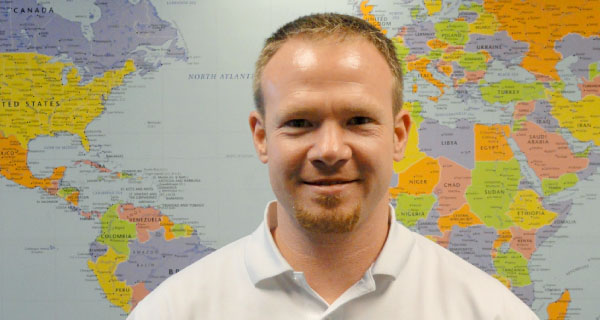David Ayers: Embarking on an ERP World Tour

NAME: David Ayers
TITLE: Lead business analyst, warehouse management, since September 2010
COMPANY: Newell Rubbermaid, East Longmeadow, Mass.
PREVIOUS EXPERIENCE: Transportation manager, training manager, U.S. Army, 27th Transportation Battalion; logistics manager, manufacturing manager, Jacobs Vehicle Systems —Danaher Corp.; financial advisor, UBS Paine Webber; shift supervisor, Jacobs Vehicle Systems; distribution and transportation manager, Lenox-Newell Rubbermaid
EDUCATION: Pursuing a BS in business administration, University of Maryland; U.S. Army Primary Leadership Development Course; U.S. Army School of Supply Management; U.S. Army School of Logistics Management; Franklin Covey time management and project management training; extensive training in Lean and Six Sigma capabilities
When tool manufacturer Lenox implemented an enterprise resource planning (ERP) system in August 2009, David Ayers got deeply involved in bringing it online. At the time, he worked as the company’s distribution and transportation manager in East Longmeadow, Mass.
Officials at Lenox’s parent, Newell Rubbermaid, appreciated his efforts so much that in September 2010 they assigned Ayers to ERP duties full-time. As a lead business analyst and member of the corporate SAP warehouse management team, Ayers helped roll out the software at Newell Rubbermaid sites across North America. Now he’s working on Europe and Africa.
Although his team’s title specifies “warehouse,” the implementation at each site encompasses the entire operation— “from inbound to manufacturing to the distribution center and, obviously, transportation improvement and regional distribution center resupplies,” says Ayers.
Ayers got his first taste of logistics in the U.S. Army as transportation manager for the 27th Transportation Battalion. Based in Germany, his team moved troops to Bosnia in 1995, and ran all the deployments and sustainment operations for that mission. When it was done, they redeployed the troops to the United States, Germany, and South Korea.
The technology for monitoring those movements wasn’t exactly high-tech. “We posted a world map on a wall,” Ayers explains. “Every few hours we’d move Post-it Notes around to reflect the location of our vessels, planes, and trains to make sure everything came together.”
That process is a lot different now, as Ayers and his colleagues work to implement a sophisticated ERP system in a wide variety of businesses and venues. The first task at each site is to learn the business processes, then figure out how best to match those processes with the software. Sometimes it means changing a process to fit the demands of the new system; sometimes it means enhancing the software to meet existing requirements.
Rather than produce a highly customized version of the software for each location, the SAP team is trying to implement improvements, then spread them to the other sites. “If each business uses a different method to do the same task, we lose the opportunity for standardization and process control,” Ayers says.
The biggest challenge in this global implementation involves change management, Ayers notes. It’s important that all employees affected by the new software become engaged in the implementation and feel that the SAP team is addressing their concerns.
To that end, Newell Rubbermaid has assigned some employees to a change management group and designated a business process champion at each location. As the go-live date approaches, the implementation team runs the system through several rounds of tests.
For Newell Rubbermaid, the payoff from all this work will be a much clearer view of global operations. “The visibility that we will have through the macro supply chain will enable us to make more intelligent and strategic decisions,” Ayers says.
The Big Questions
What do you do when you’re not at work?
I love to spend time with family and friends. My girlfriend and I like to pursue adventure —we go parachuting and jet skiing. I play hockey, and enjoy tackling home improvement and construction projects.
Ideal dinner companion?
Leonardo da Vinci. I’d ask what he thinks of the technology available to us today, and his ideas about new areas of opportunity.
What’s in your backpack?
Safety glasses, iPod, digital camera, more power cables than I’ll ever need, and a medical kit for when I’m on the road. I also carry a stop-watch for doing cycle-time studies, a handful of mixed currencies, a laptop, and work files. The backpack weighs about 35 pounds!
First Web site you look at in the morning?
Yahoo! Finance. It’s a good snapshot of what’s happening globally and economically.
